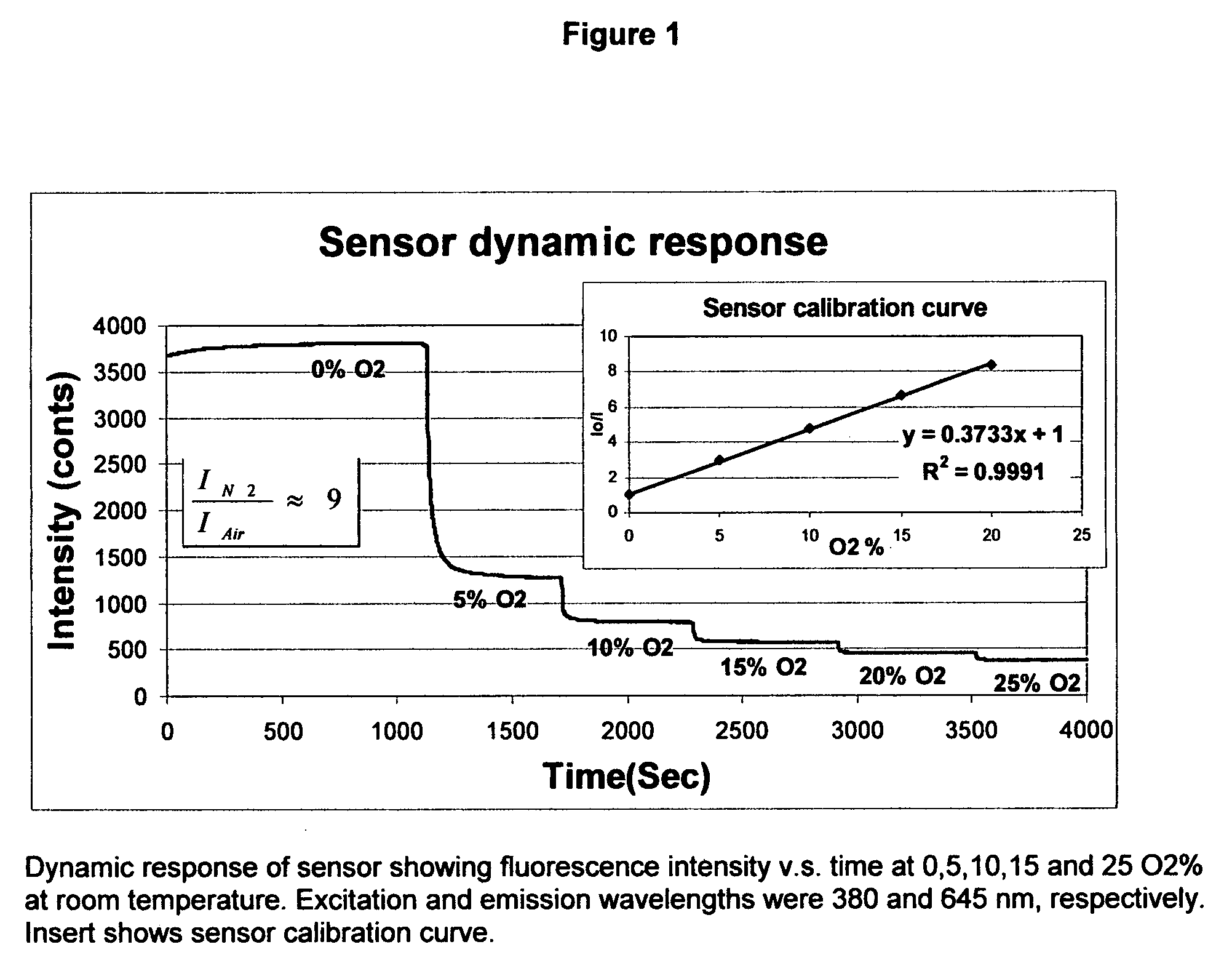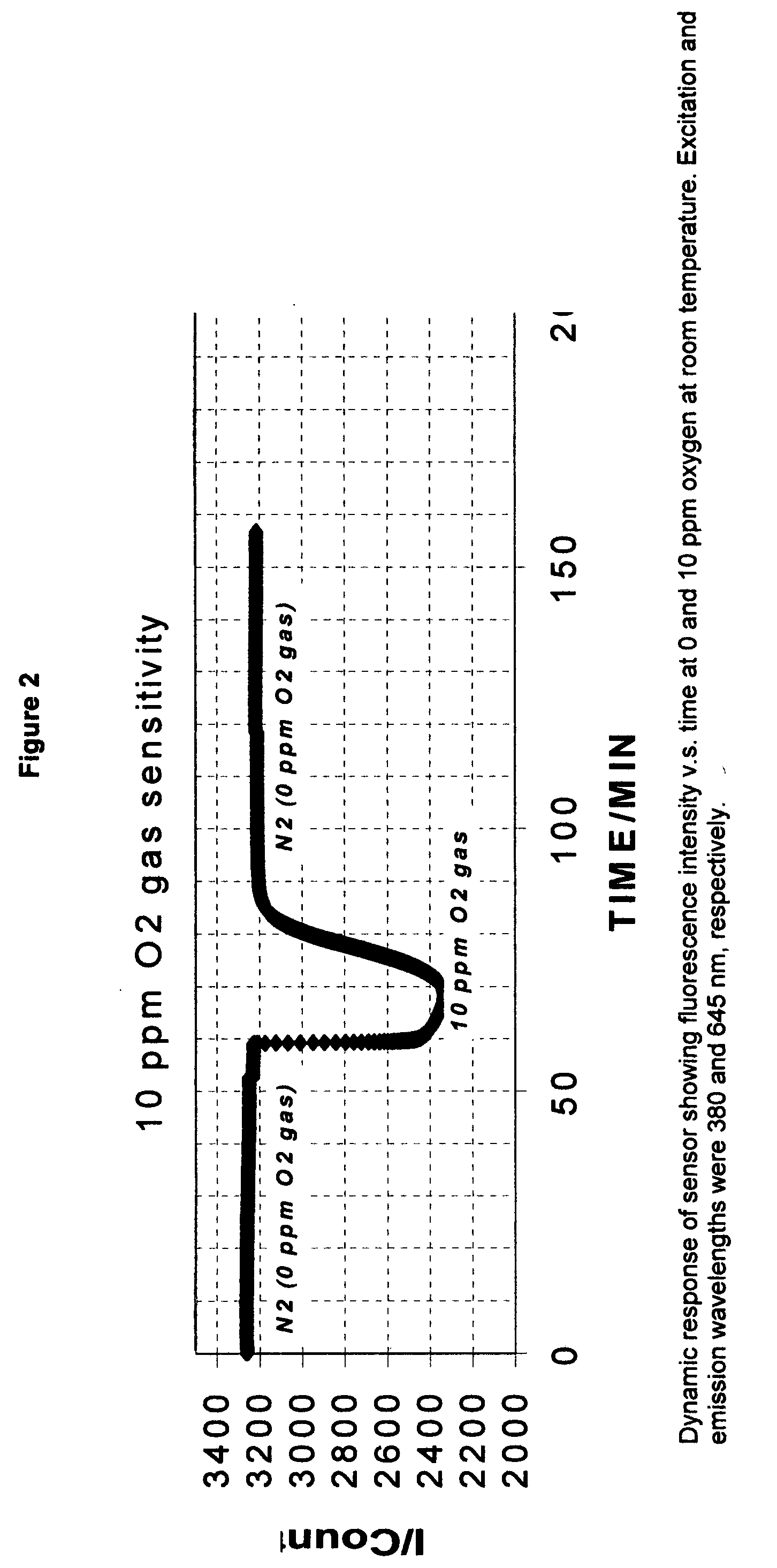Method and composition for a platinum embedded sol gel optical chemical sensor with improved sensitivity and chemical stability
- Summary
- Abstract
- Description
- Claims
- Application Information
AI Technical Summary
Benefits of technology
Problems solved by technology
Method used
Image
Examples
Embodiment Construction
[0049]The fiber optic sensor elements of a preferred embodiment of the present invention employ the sol-gel technique to encapsulate fluorescence material sensitive to oxygen. The sol gel technique is well known in the art. An explanation of the usual process is contained in “Sol-gel Coating-based Fiber Optic O2 / DO sensor,” M. R. Shahriari, J. Y. Dings, J. Tongs, G. H. Sigel, International Symposium on Optical Tools for Manufacturing and Advanced Automation, Chemical, Biomedical, and Environmental Fiber Sensors, Proc. SPIE, V0l. 2068 (1993).
[0050]There are various routes to the manufacture of sol-gel matrices, which are known to the art. Common starting materials are tetraethyl orthosilicate (TEOS) and tetramethy orthosilicate (TMOS). A common route is to mix a metal siloxane and solvent with any desired modifiers or additives and / or dopants. This sol is then encouraged to form a gel via hydrolysis with subsequent polycondensation forming certain intermediate silicate fractals, mono...
PUM
 Login to View More
Login to View More Abstract
Description
Claims
Application Information
 Login to View More
Login to View More - R&D
- Intellectual Property
- Life Sciences
- Materials
- Tech Scout
- Unparalleled Data Quality
- Higher Quality Content
- 60% Fewer Hallucinations
Browse by: Latest US Patents, China's latest patents, Technical Efficacy Thesaurus, Application Domain, Technology Topic, Popular Technical Reports.
© 2025 PatSnap. All rights reserved.Legal|Privacy policy|Modern Slavery Act Transparency Statement|Sitemap|About US| Contact US: help@patsnap.com



